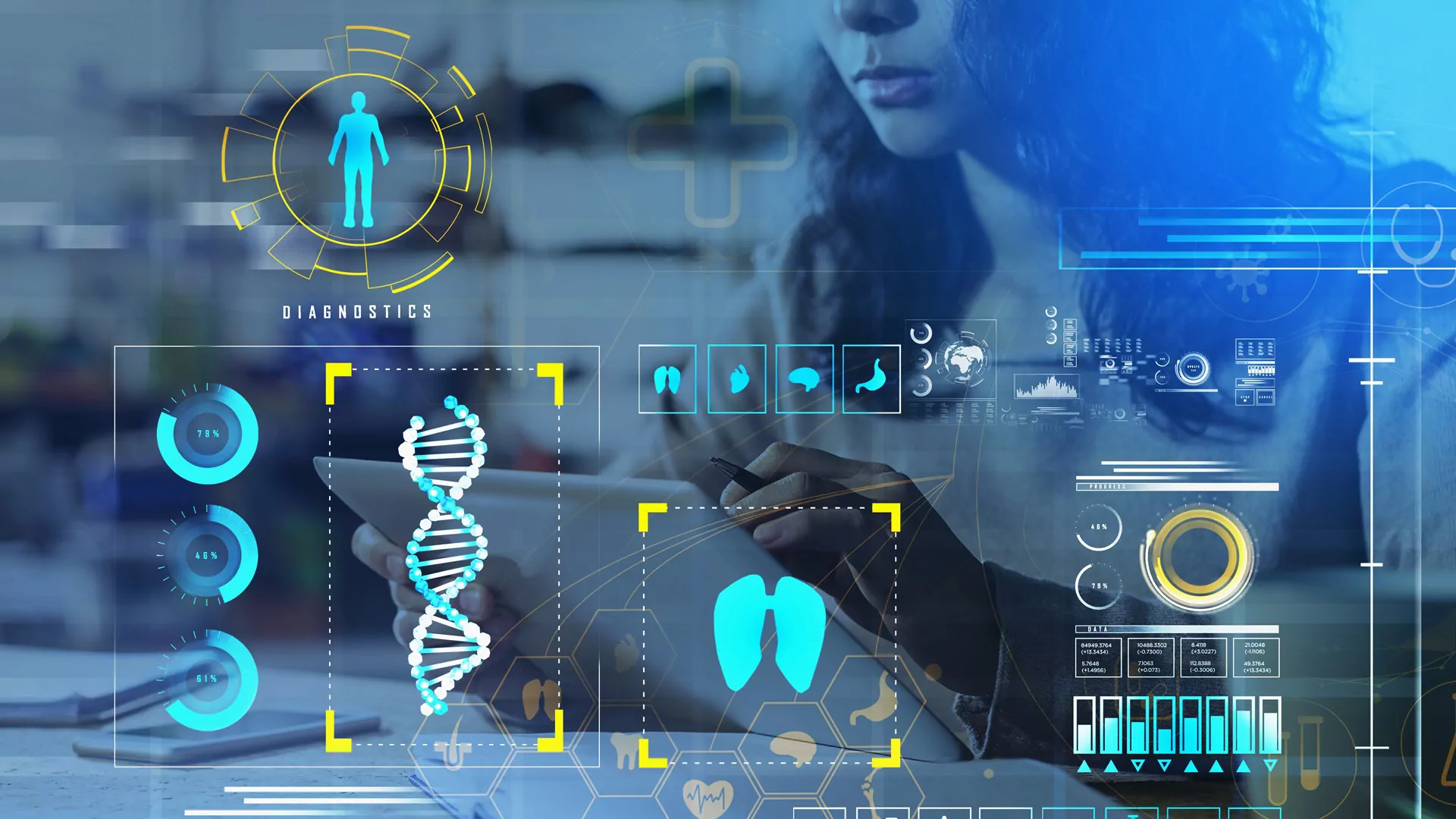Introduction: Why CX-driven AI Matters
The fusion of customer experience (CX) and artificial intelligence (AI) is transforming public health services. A CX-focused approach in AI development ensures technology that aligns with user needs, thereby improving service quality. Nevertheless, computational resources and the cost of training AI models, especially Large Language Models (LLM), cannot be overlooked. A selective approach to AI application, informed by CX insights, can prevent inefficiencies and wasteful resource allocation. Analysis and strategic application of AI use cases yield targeted, effective, and cost-efficient solutions. Trust in AI interactions, especially within the public sector, is essential. Adherence with AI-related rules and policies is key to preventing misuse and maintaining public trust. Stringent guidelines, similar to those set by companies like Microsoft, are necessary for government entities to uphold their credibility. Data constitutes the backbone of both AI and CX. In the context of CX, data can be divided into two categories: experiential data and training data.

Experiential data is collected through user interactions and experiences with a product or service. It encompasses information gathered from research, analytics like Google Analytics, log files, abandoned forms, user engagement metrics, and more. This data provides insights into user experience (UX), revealing how customers interact with a website or product, their preferences, areas for improvement, and the time it takes them to complete tasks both online and offline. Training data is used to “train” AI models. AI learns and improves by analyzing vast amounts of data, identifying patterns, and making predictions based on those patterns. The more high-quality data is fed into an AI, the better it gets at performing its tasks. This type of data forms the backbone of AI systems and differs from experiential data, as it is more about patterns and relationships than individual user experiences. This white paper emphasizes the importance of a CX-driven method to AI. Such an approach ensures solutions address the relevant problems, comply with relevant policies and regulations, and appropriately leverage technology investments to elevate CX.
How to Leverage CX in AI Solutions and Vice Versa
Implementing AI in government, especially in public health, highlights the importance of incorporating a CX focus in AI design. This integration greatly enhances the quality of health services.
CX prioritizes the end user, offering invaluable insights into their needs and the challenges they encounter. Using these insights to inform AI system development and implementation results in user-friendly, intuitive services. This not only enhances customer satisfaction but also facilitates better health outcomes. For example, AI simplifies healthcare by helping patients schedule medical appointments at convenient times and locations, and by predicting healthcare outcomes in grant management systems for health organizations.
Journey mapping is an insightful method to illustrate a customer’s interactions with a service. This
process helps identify areas that need improvement. For instance, if customers struggle to find crucial health information, an AI chatbot could provide immediate responses, available round the clock. Journey mapping goes beyond troubleshooting; it anticipates customer needs. AI comes into play here, addressing these needs before they escalate into issues. It can perform tasks like issuing health risk alerts or reminding customers about medical appointments.
Effective feedback collection from customers is another advantage of journey mapping. This input guides the enhancement of AI models and the iterative improvement of services. It is a strategy for continuous refinement based on real customer experiences.
Inspection of journey maps reveals user-system interactions. Such scrutiny provides insights into user emotions and system performance. It highlights areas where Robotic Process Automation (RPA) or machine learning (ML) models can assist in tackling highly repetitive tasks versus one that needs decision-making or analysis. Journey mapping helps determine the most suitable technology solution.

AI can be beneficial in implementing effective CX practices, processes, and technologies in various areas, including:
Design Automation: AI handles everyday design tasks, such as creating many versions of a design or tweaking designs for different screens and devices. UX designers set the rules, and AI creates many designs that follow these rules, which saves time and work.
Content Generation: AI helps UX designers make content for user interfaces. For instance, AI tools can make placeholder text, suggest the right images or videos, or automatically translate interfaces into many languages. This makes content creation easier and ensures a consistent design.
Design Testing and Analysis: AI helps UX designers test and review designs. AI can run usability tests by acting like a user and finding potential problems or areas that need enhancement. This information helps designers improve their designs based on how users behave and what they prefer.
Data-Driven Design Decisions: AI can look at user data, including feedback, behavior patterns, and preferences, to give UX designers insights. AI examines this data to find out what users need, what problems they have, and what they prefer. This helps designers make decisions that meet user expectations.
Design Suggestions: AI can look at existing design patterns and trends from a big design database. Based on what it finds, AI design tools can give design ideas and suggestions, such as layout options, color schemes, font choices, and icons.
Data Is a Foundational Element to AI and CX Alike
Data is at the heart of both AI and CX, helping shape strategies and deliver personalized experiences to users. Decision-makers heavily rely on data to gain insights into trends and user behaviors. This information helps shape policies and carry out programs that meet the public’s needs effectively. Using data, AI can deliver targeted health assistance to specific groups, for example, identifying those who will benefit most from particular health interventions. From a CX perspective, data can reveal patterns and provide insights that can be transformed into actionable steps to improve the service experience for customers. When it comes to CX, empathy is key. AI is a helpful tool to boost interactions centered around humans. Instead of replacing CX, AI makes it better by making interactions more efficient and personalized, all while keeping the human touch.

Harnessing the power of data is the foundation for both AI and CX. For CX, using experiential data, which includes information collected from how people interact with a service or product, allows organizations to unearth valuable insights. This helps them offer personalized experiences that resonate with their users, forming meaningful connections in the process. On the other hand, for AI, the focus is on training data sets. This type of data is not so much about individual user experiences, but about teaching the AI how to function and improve. The more quality data it receives, the better it becomes at identifying patterns and performing tasks.
How CX Can Help Users Engage Better with AI Health and Other Public Services
REI actively collaborates with government agencies to implement AI solutions that improve CX. Here are some notable examples of our work:
We worked with the Food and Drug Administration (FDA) to enhance a system called PREDICT (Predictive Risk-based Evaluation for Dynamic Import Compliance Targeting) to screen all shipments coming into the U.S. This system helps catch bad products and speeds up the entry of good ones. It now uses automated data mining, pattern discovery, and automated queries of FDA database to determine the potential risk of a shipment. The outcome is reduced processing time for FDA staff compared to having to manually screen all the shipments.
During the COVID-19 pandemic, REI partnered with the Federal Emergency Management Agency (FEMA) to create FEMADEX. Powered by a machine learning model, this tool assisted field analysts in forecasting COVID-19 cases in every U.S. county for the upcoming two weeks. Without FEMADEX, this process would have taken approximately two days. With FEMADEX, however, analysts generated predictions for all 3,143 counties within just one hour, producing 48 distinct versions for each county. To ensure accuracy, extensive testing was conducted using 150,000 models.
Additionally, we developed a deep learning model that automatically detects and assesses damaged buildings from satellite images for FEMA. This model has an accuracy rate of 80%, aiding in disaster response and recovery efforts.

We teamed with NASA to create a semantically aware topic model designed to handle the agency’s Small Business Innovation Research (SBIR) proposals. These proposals, often as long as 20 pages, present innovative research ideas from over 114 different areas. Understanding these areas is key to NASA’s strategy.
This model tracks each proposal and how its content and related research fields change over time. It automatically categorizes proposals into relevant research areas and monitors how these topics evolve. Plus, it can spot similar proposals and is currently used to weed out duplicates. This makes the entire proposal process simpler and more efficient.
At the General Services Administration (GSA), we created a proof of concept system where each comment and user is connected to all regulations and other comments/users. This system solicits public feedback on proposed government regulations. Based on this feedback, the agency either proceeds with the regulations or pauses for further discussion.
However, this review process was manual, and each regulation received about 3,000 comments on average. Sometimes, individuals attempted to slow down the decision process on a regulation dishonestly. To tackle this, REI planned to use deep learning techniques. This would help spot fraudulent activities and offer a deeper understanding of the comments for each regulation. Identifying fraudulent attempts will assist GSA in keeping the bipartisan regulation process as transparent as possible.
Lastly, we collaborated with the Small Business Administration (SBA) to address the challenges faced by the agency’s SBIR helpdesk support team. By developing an AI model and deploying it as a chatbot application, we automated responses to common inquiries, reducing the number of helpdesk tickets, and improving overall efficiency.

AI Limitations
AI has great potential, but it is not right for every situation. Some situations need human qualities like understanding, empathy, and judgment, which AI has not fully mastered yet.
We need to understand the risks that come with using AI if we do not fully grasp what it can do. These risks might include giving out wrong information or even causing harm. While AI offers a great deal of promise, we cannot rely on it completely without considering its ethical implications and the need for human intervention.
An illustrative example is the use of AI in helplines. In a case involving an eating disorder helpline, a chatbot was deactivated after offering harmful advice. This shows the dangers and limits of AI in sensitive situations. When dealing with deeply personal and emotional subjects like eating disorders, human empathy, compassion, and understanding are indispensable.
Privacy is also a major concern. Despite a Penn State University study that found that people tend to trust machines more than humans with their private information, there are still significant challenges with data privacy, security, and consent. User privacy must be a top priority, and data must be handled responsibly in AI applications.
Furthermore, we should think carefully about liability and potential legal consequences when using AI. It is vital to use AI responsibly and follow ethical guidelines to avoid any negative outcomes.
AI can be a powerful tool, especially when combined with CX strategies, but we must use it wisely and ethically. Our approach should be guided by an understanding of its limitations and a priority on user privacy and safety.
Conclusion: Uniting AI and User Needs to Shape the Future of Public Health
In the constantly evolving landscape of public health services, the marriage between CX and AI can be a game changer. If government health agencies use a CX-focused approach to AI solutions, they can reap many benefits. These include better healthcare delivery, improved results, and a focus on user satisfaction and safety.
However, it is important to approach this combination with realistic expectations and a clear understanding of what AI cannot do.
It is essential to build CX-focused AI solutions to minimize risks and make the most of AI in public health services. If we make user needs our top priority and follow ethical guidelines, government health agencies can make sure AI solutions are designed to tackle real-world problems effectively.
It is also key to get rid of the notion that AI can fix everything. While AI offers huge possibilities, it is just as important to understand its limitations. We need to have realistic expectations and keep evaluating AI’s capabilities to avoid relying too much on it and to protect public health.

In summary, adopting a CX-focused approach to AI in public health services is crucial for improving healthcare delivery in today’s digital world. By harnessing the power of AI and focusing on user needs, government health agencies can drive innovation, improve results, and build a healthcare system that puts the well-being and satisfaction of people front and center.
With thoughtful navigation, we can forge a future where technology and human-centricity coexist harmoniously. However, it is vital to recognize that AI currently lacks the innate human touch. Therefore, prioritizing CX becomes crucial in infusing the human element into AI. This bridge between technology and human experiences paves the way for AI to serve as a tool that improves human well-being in the future.
Is your agency ready to revolutionize public health services and accomplish better healthcare outcomes? Reach out to us today at info@reisystems.com, and we will guide you through the transformative power of CX-driven AI.





